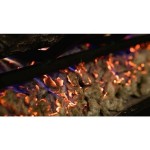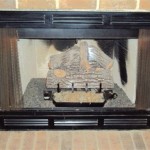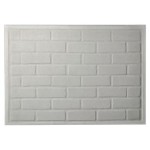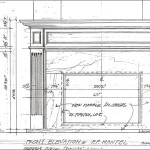Outdoor Cinder Block Fireplace Plans: A Comprehensive Guide
An outdoor fireplace serves as a striking focal point and gathering place, extending living spaces into the natural environment. Cinder block fireplaces present a cost-effective and structurally sound option for homeowners seeking to enhance their outdoor enjoyment. Their modular nature offers flexibility in design and simplifies the construction process, making them a popular choice for DIY projects and professionally installed structures alike. This article will delve into the key aspects of planning and executing an outdoor cinder block fireplace project, covering design considerations, material selection, and construction techniques.
Design Considerations and Planning
Before commencing any construction, thorough planning is essential. The design phase requires careful consideration of several factors that influence the fireplace's functionality, aesthetics, and compliance with local regulations. First, assess the intended location. It should be situated away from flammable materials like trees, shrubs, and wooden structures. Maintain a safe distance, typically at least 10 feet, to prevent fire hazards. Also consider prevailing wind directions; positioning the fireplace to minimize smoke blowing towards seating areas will enhance user comfort.
Local building codes and regulations often govern the construction of outdoor fireplaces. These regulations may specify setbacks from property lines, required permits, chimney height restrictions, and burn ban protocols. Contact the local building department or municipality to obtain necessary permits and ensure compliance with all applicable codes. Failure to adhere to regulations can result in fines, project delays, or even the requirement to dismantle the structure.
The size and style of the fireplace should be proportionate to the surrounding outdoor space. A massive fireplace in a small patio can appear overwhelming, while a small fireplace in a vast yard may lack visual impact. Consider the existing architectural style of the home and landscape when choosing the fireplace's design. Options range from traditional brick-clad designs to modern, minimalist cinder block structures. Plan the fireplace's dimensions, including the width, depth, and height, to accommodate the desired firebox size and overall aesthetic.
Material Selection and Preparation
Selecting the correct materials is crucial for the durability and longevity of the outdoor fireplace. Cinder blocks form the primary structural component and should be chosen for their strength and weather resistance. Standard gray cinder blocks are commonly used, but decorative blocks with textured surfaces or colored finishes can add visual appeal. Mortar serves as the binding agent between the cinder blocks and should be specifically formulated for masonry applications. Type S mortar is generally recommended for outdoor projects due to its superior bonding strength and resistance to moisture penetration.
The firebox, where the fire is built, requires fire-resistant materials to withstand the high temperatures. Firebrick, characterized by its dense composition and high heat resistance, is ideal for lining the firebox. Firebrick mortar, also known as refractory mortar, is specifically formulated for bonding firebrick and can withstand extreme temperatures without cracking or crumbling. Alternatively, a prefabricated firebox insert can streamline the construction process and ensure proper fire containment.
The surrounding area and any decorative elements may require additional materials. For example, a concrete pad provides a level and stable foundation for the fireplace. Natural stone veneer, brick veneer, or stucco can be applied to the exterior of the cinder blocks to enhance the aesthetic appeal. A chimney cap or spark arrestor prevents embers from escaping and potentially igniting nearby flammable materials.
Before beginning construction, ensure that all materials are on-site and readily accessible. Calculate the quantity of materials required based on the fireplace's dimensions and design. Account for waste by ordering slightly more than estimated. Prepare the work area by clearing any vegetation or debris and leveling the ground. Gather necessary tools, including a concrete mixer, mortar trowel, level, measuring tape, saw, and safety glasses.
Construction Techniques and Best Practices
Building a cinder block fireplace requires careful attention to detail and adherence to proper construction techniques. Start by constructing a solid foundation. A concrete pad that extends beyond the footprint of the fireplace is recommended. The thickness of the pad should be at least 4 inches, and it should be reinforced with steel mesh to prevent cracking.
Lay the first course of cinder blocks on a bed of mortar, ensuring that they are level and aligned. Use a level to check the alignment of each block and adjust as needed. Apply mortar to the vertical joints between the blocks and remove any excess mortar. Stagger the joints in subsequent courses to create a stronger bond and prevent cracking. As the walls rise, periodically check for plumbness (vertical alignment) using a level or plumb bob.
When constructing the firebox, use firebrick and firebrick mortar to line the interior. Ensure that the firebrick are tightly fitted together and that the mortar joints are thin and uniform. Construct the chimney using cinder blocks or prefabricated chimney sections. The chimney should extend above the roofline to provide adequate draft and prevent smoke from blowing back into the outdoor space. Secure a chimney cap or spark arrestor to the top of the chimney to prevent embers from escaping.
After the mortar has cured, clean the fireplace and surrounding area. Remove any debris or excess mortar. Apply a sealant to the exterior of the cinder blocks to protect them from moisture penetration. Finally, conduct a test fire to ensure that the fireplace is functioning properly and that the chimney is providing adequate draft. Monitor the fire carefully and extinguish it if any problems arise. If a fire is set, ensure that somebody is attending to the fire at all times to prevent an accidental fire from spreading.

How To Build An Outdoor Fireplace Today S Creative Life

Saguaro Diy Outdoor Fireplace Plan

Outdoor Fireplace With Bench Seating W Tips From A Professional Mason

Diy Outdoor Fireplace Plans Stone Fireplaces Designs
:max_bytes(150000):strip_icc()/livingstonemasonary-154847150f2a49558b21b5a93d08dfc9.jpg?strip=all)
10 Free Outdoor Fireplace Construction Plans

How To Build An Outdoor Fireplace Today S Creative Life

Maricopa Fireplace Design Diy Outdoor Plan

Outdoor Fireplace Plan Your Diy Headquarters
:max_bytes(150000):strip_icc()/theshed-502c277988c14e118b4ad4f3cfc54a90.jpg?strip=all)
10 Free Outdoor Fireplace Construction Plans

Cinder Block Outdoor Fireplace Plans Approximate Dimensions 10 Wide 5 Deep 8 Tall Backyard Diy








